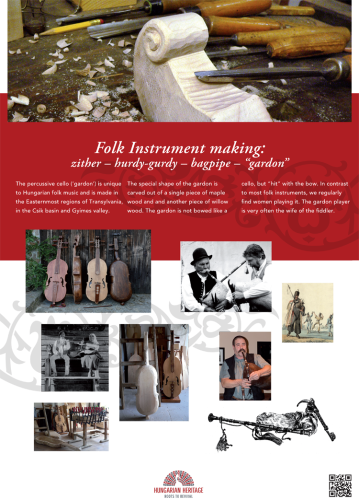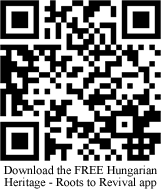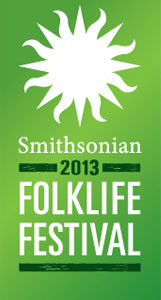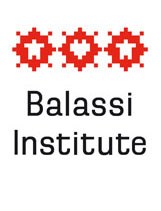 The zither (citera) is among the oldest string folk instruments, mentioned in medieval Hungarian texts already in the 13th century. It is mostly played as a solo instrument, just like the hurdy-gurdy (‘tekerő’ or “nyenyere”) and the bagpipe (‘duda’) are. Up until the 1920s these instruments were popular at festivities because of their strong sound with which they could provide dance music without band accompaniment. Shepherds, with their rather isolated lifestyle, have always ranked among the best players of the bagpipe.
The zither (citera) is among the oldest string folk instruments, mentioned in medieval Hungarian texts already in the 13th century. It is mostly played as a solo instrument, just like the hurdy-gurdy (‘tekerő’ or “nyenyere”) and the bagpipe (‘duda’) are. Up until the 1920s these instruments were popular at festivities because of their strong sound with which they could provide dance music without band accompaniment. Shepherds, with their rather isolated lifestyle, have always ranked among the best players of the bagpipe.
These instruments were “rescued” from extinction through the efforts of the Hungarian folk music revival, and are today very popular instruments among Hungarian folk music bands.
The percussive cello (‘gardon’) is unique to Hungarian folk music and is made in the Easternmost regions of Transylvania, in the Csik basin and Gyimes valley. The special shape of the gardon is carved out of a single piece of maple wood and and another piece of willow wood. The gardon is not bowed like a cello, but „hit” with the bow. In contrast to most folk instruments, we regularly find women playing it. The gardon player is very often the wife of the fiddler.
Tibor Gáts
Born in 1949, Tibor Gáts has been making traditional folk instruments since 1973; zither and gardon are his specialty. His zithers, which come in a wide array of shapes, sizes, tones, and pitches, span from traditional Hungarian folk zithers to “Gáts instruments” that reflect the maker’s creative personality and original ideas. Professional and amateur musicians, zither bands and folk music schools equally take pleasure in using his instruments, as he designs each one to meet the specific needs of its future player. For many years, he has participated in domestic and international exhibitions and is the recipient of numerous recognitions, and holds the title Master of Folk Art award since 1993.
Related pages
- Tibor Gáts
- Craftsmanship
- The knowledge and skill of old masters
- Folk Musical Instruments
- Folk Musical Ensembles
Go to the next stop of the virtual tour »»»






